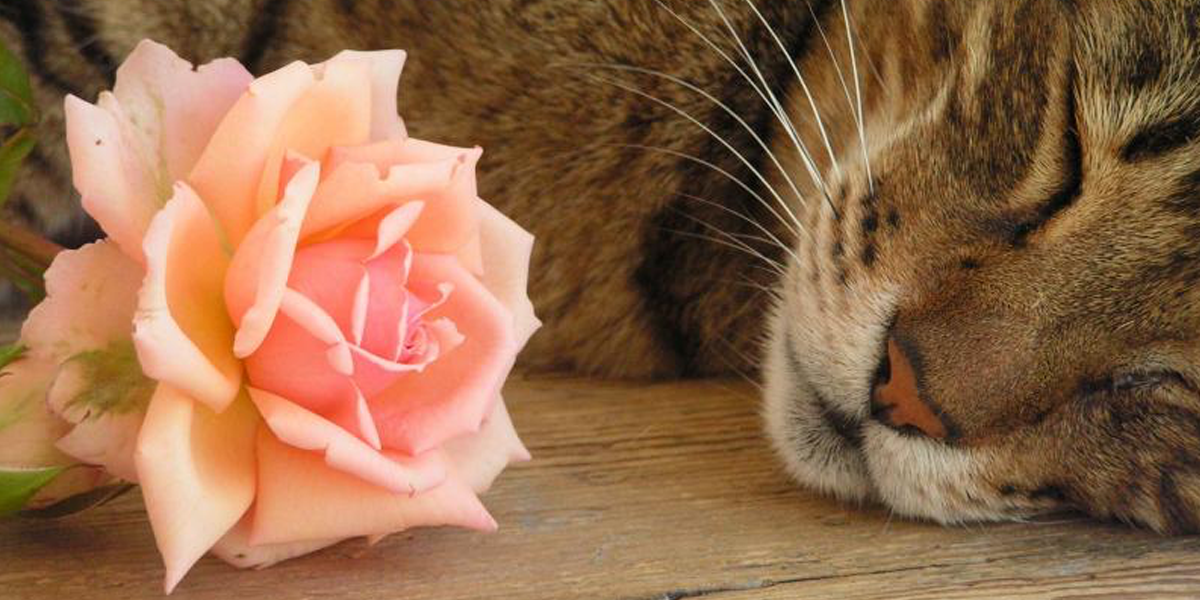The death of a pet can be an extremely sad and distressing time. We hope that the following advice helps you to choose a final resting place for your cat. Click here for help on dealing with bereavement.
Cats (along with other types of pets) can be cremated or buried. Here we explain the options in a bit more detail.
Cremation
There are two types of cremation services available:
Communal cremation
This is where several animals are cremated together. If you choose this option, your cat’s ashes will not be returned to you but either scattered or buried at a licensed site, such as a memorial area in the facility’s grounds. Speak to your vet for more information on this, or contact the crematorium directly.
Individual cremation
This is where animals are individually cremated, and you can have your cat’s ashes returned to you, to scatter, bury, or keep. A pet’s ashes can be scattered on land you own; if you want to scatter elsewhere, for example in a meadow or woodland area, you will need to contact the local authority or Environment Agency. It is illegal in the UK* for a pet’s ashes to be scattered in a human burial ground, or placed in an owner’s coffin prior to burial or cremation. However, there are some crematoriums and burial grounds that allow both human and pet cremations and burials, so that you and your cat can remain close together after death.
Individual cremation is more expensive than communal cremation. Speak to your vet or the crematorium for more details.
Burying
UK law* allows pets to be buried either in the property where they last lived, or in a licensed pet cemetery. You cannot bury your cat on land that is owned by someone else, or public land if you do not have permission to do so. If in doubt, contact your local authority.
Burying at home
Make sure you check with your vet that it is safe to bury your cat at home without posing a risk to you or other animals. When choosing a burial site, make sure it is not close to a waterway, well or spring so as not to contaminate water sources. Consider wearing gloves, and wash your hands after the burial. Bear in mind that it can be hard work to dig a grave. You should aim for a depth of at least one metre (three feet). Make sure you cover the burial site with something heavy such as a paving stone or heavy pot, to stop wild animals digging there.
Pet cemetery
Some people may be worried about leaving their pet’s grave behind if they move house, or do not have a garden to bury them in, in which case burial at a pet cemetery may be preferable. All pet cemeteries are different, and it is important to visit before you make your decision. You should also ask yourself how you will feel if the cemetery closes due to financial reasons. A burial at a pet ceremony is more expensive than burying at home: you will need to purchase a plot, a coffin, and there is usually a maintenance fee, to ensure that the grounds are maintained.
For more information on pet cemeteries and cremation, see the Association of Private Pet Cemeteries and Crematoria: www.appcc.org.uk
*Please check the law in your country
Thank you for visiting our website, we hope you have found our information useful.
All our advice is freely accessible to everyone, wherever you are in the world. However, as a charity, we need your support to enable us to keep delivering high quality and up to date information for everyone. Please consider making a contribution, big or small, to keep our content free, accurate and relevant.
Support International Cat Care from as little £3
Thank you.
Donate Now


